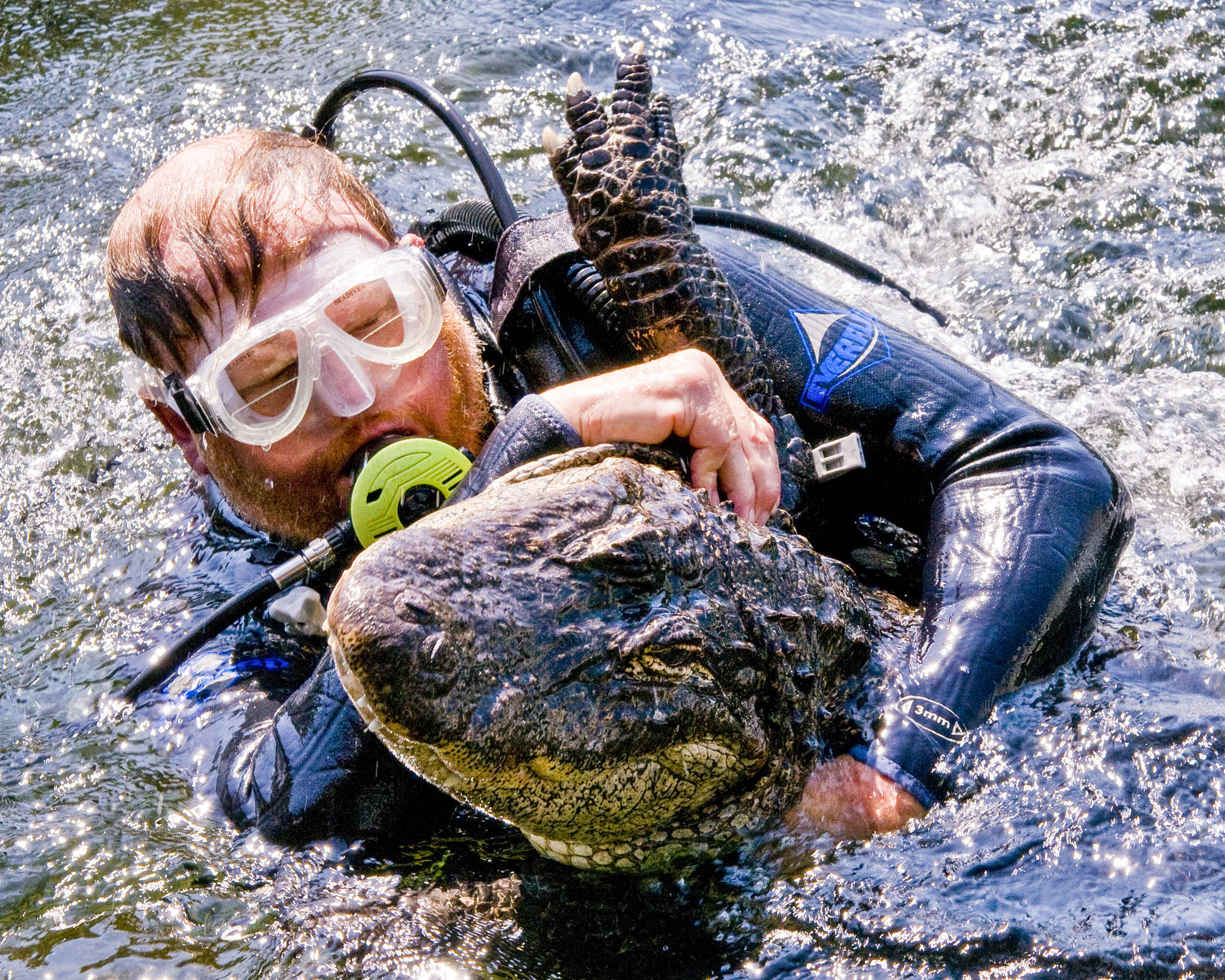By Bjorn Dihle
Mark Emery may be the most interesting man in the world. Legend has it that he decided to move to Bristol Bay after besting the biggest alligator in Florida in a Greco-Roman wrestling match. He was on the eve of turning 30 and had already lived a storied life — he began his career working with wildlife under the employment of famous herpetologist Ross Allen at the Reptile Institute in Silver Springs. Emery would give talks to visitors and show them how to wrestle alligators and milk rattlesnakes.
“It didn’t pay great. Three bucks an hour. If you worked there any length of time, you were sure to get bitten by rattlesnakes and alligators,” Emery said.
[Pride of Bristol Bay: True stories from a fishing photographer]
Still, Emery loved it. His time with Allen, he says, taught him how to tell stories and exposed him to the world of wildlife filmmaking. Silver Springs was also a famous scuba diving center, and Emery, apprenticing with underwater cinematographer Jordy Klein Jr., learned how to film underwater. During this time period, Emery also fought as a professional heavyweight kickboxer.
“I quit while I was ahead,” Emery said.
It was around then, in 1984, that Emery moved to King Salmon in Bristol Bay. He’d taken a job guiding visiting sports fishermen but was equally drawn to the prospect of exploring and filming the surrounding wild country. When he was a kid, he was captivated by articles in Outdoor Life about the impressive concentration of brown bears at nearby Brooks Falls. One of his first impressions of Bristol Bay was about as opposite from wilderness magic as it gets, though.
Emery was visiting the local watering hole when a guy came swimming down atop the bar, knocking down other patron’s drinks as he went, until he was right underneath the recently retired heavyweight kickboxer. The swimmer, full of liquid courage, looked up and not so politely asked what Emery was doing here. Emery shrugged it off. Others might have asked the same question had they known that Emery, though an avid fisherman, had never fished for salmon.
“I caught king salmon with plastic worms that first season,” Emery said, laughing.
[Lessons from a Bristol Bay ‘Salmon Mama’]
Emery, with his love of wildlife and camera skills, was soon venturing into the surrounding wilderness. He was blown away by the pristine rivers filled with salmon and the brown bears feasting on them. Getting to work with brown bears did not disappoint Emery — he quickly realized they were as intelligent as primates, and a highly nuanced animal to work with. Once, on a half mile of stream, Emery counted 73 different bears. His first Alaskan film project was “The Valley of Ten Thousand Smokes,” and tells the story of the June 6, 1912, eruption of the Novarupta volcano — the largest volcanic eruption in the 20th century. The event occurred in what is now Katmai National Park, roughly 60 miles from King Salmon. The film focuses on how wildlife came back to use the land after it was devastated.
“There was 40 square miles of ash. It was a monster of destruction. Now it’s a place of great renewal,” Emery said.
The film was picked up by National Geographic, and was the beginning of Emery’s long relationship with the production company. Emery’s resume is impressive — he’s been a co-recipient of two Emmys for his work on National Geographic Television’s series “Great Migrations” and “Untamed Americas.”
Salmon play a vital part in Emery’s life. He’s now a long way from the days when he caught king salmon with plastic worms. When asked about his thoughts on the proposed Pebble Mine, which recently had a key permit denied by the Army Corps for being “against the public interest” among other things, he expressed his sympathy for the limited number of people in the Bristol Bay region who want the mine in hopes that it’ll better their economic situation.
“But there’s no question of what sort of future we want. We need to hang on to salmon as hard as we can,” he said.
One of his favorite film projects over the course of his career was National Geographic’s 1998 “Seasons of the Salmon.” It was a project that involved two years of filming and went through the whole life process of sockeye salmon.
Besides working as a wildlife cinematographer and as a crack fishing guide who can get fish to bite whatever he throws at them, Emery is a talented musician. He’s written the scores for more than 300 television shows’ soundtracks. Despite his impressive career, Emery is one of the most humble and likable guys you’ll meet in Alaska.
He and his wife Mary, the office manager for the Commercial Fisheries branch of Fish and Game in King Salmon, split their time between Alaska and Ocala, Florida. Typically, Emery spends the spring filming brown bears on the Pacific side of the Alaska Peninsula. He’s back in King Salmon and ready to guide visiting fishermen by the end of June. By the first week of August, he’s back to filming bears and salmon. During the fall and winter, he’s busy filming alligators, deer and other wildlife in Florida. King Salmon will always be home to Emery, and he counts himself lucky to have such a great community of friends there.
“It’s so fortunate to have a place like Bristol Bay. I’m always humbled to be out there. I’m going to be living in King Salmon until the day I fall down,” Emery said.
Check out Emery’s work at his website and follow him on Instagram at www.instagram.com/markemeryfilms/.
• Pride of Bristol Bay is a free column written by Bjorn Dihle and provided by its namesake, a fisherman direct seafood marketer that specializes in delivering the highest quality of sustainably caught wild salmon from Bristol Bay to your doorstep.

